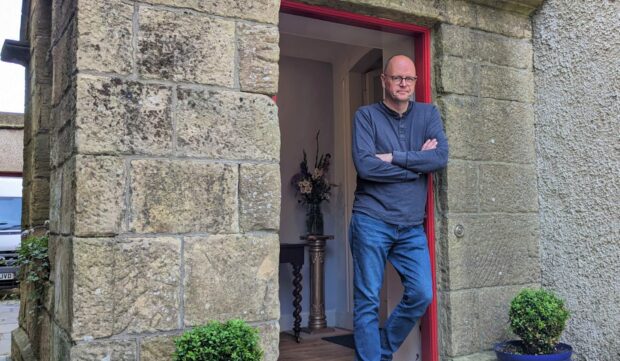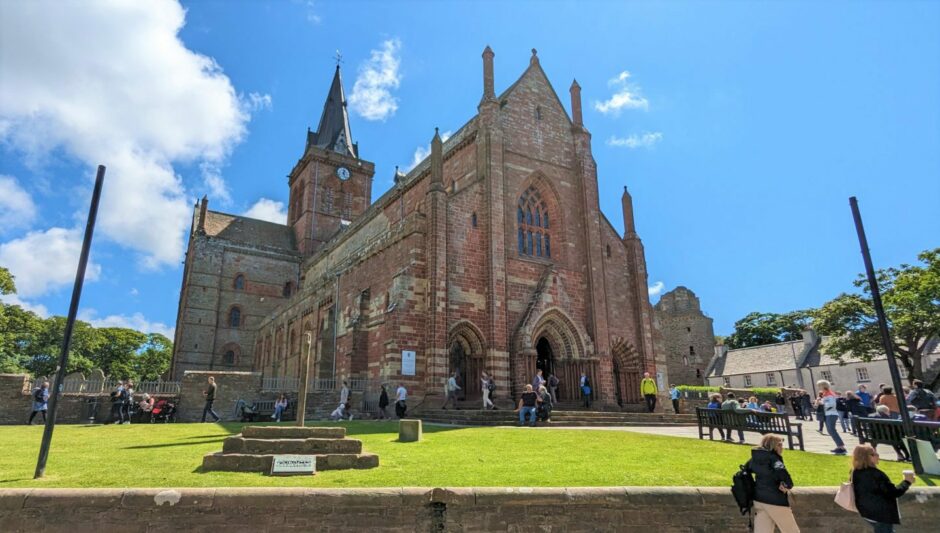“It’s a link we celebrate and a very tangible one,” says Leslie Burgher, Norway’s honorary consul to Orkney.
“People feel a real connection. But I’m slightly unsure what people would think about the practicalities of becoming part of Norway – if indeed it’s possible.”
Mr Burgher is, as he puts it, the latest in a long line of people in role, which he has held since around 2015.
Given recent reports about Orkney Islands Council perhaps making a bid to join the Scandinavian country, he seems like the ideal person to ask what Orcadians themselves think.
He says: “It’s not unusual to hear it mentioned when we’re in company with Norwegians – but not usually entirely seriously!”
While it remains to be seen how serious these reports are, it can’t be denied that there are deep connections between the two areas.
These can be seen in a great many aspects of Orkney’s culture and history.
Mr Burgher, who is an architect day-to-day, talked about the extent of these ties from his office in Kirkwall, following days of media frenzy created by a notice of motion filed by the local council leader James Stockan.
The leader said that, given the council’s problems are being ignored in Holyrood and Westminster, it should look at “options alternative forms of governance”.
This included a great many options. “Nothing off the table”, as the council leader said.
However, it also included looking towards Orkney’s Nordic links.
The county’s deep connection to Norway quickly became a focal point.
Why does Orkney have a Norwegian consul?
Mr Burgher explained that Norway established a consular service not long after the country became independent in 1905.
They needed someone to represent those interests.
“These days the role is mainly just to make connections between people in Orkney and people in Norway,” he said.
“To strengthen business and cultural links and promote them.
“I can also provide assistance to Norwegian citizens who are here if they became ill or if they’ve lost their passports.”
His role also extends to Norwegian elections. He is a returning officer for Norway and any Norwegians can visit his office to vote.
He said: “It’s the normal kind of consular service that you would get anywhere.”
However, Orkney’s historical ties go back much further than the establishment of the consul role.
Orkney and Norway’s historical ties
Giving an abbreviated version of the two areas’ ties, Mr Burgher pointed out that their shared history goes back over 1000 years, when the Vikings first arrived in Orkney.
Vikings became farmers and landowners in the islands.
Due to its location as a “crossroads” between Norway and Scotland’s east and west Coasts, Iceland, and the Faroe Islands, Orkney became a power base for the Vikings.
“We think of the sea as a barrier but it was their main road,” said Mr Burgher.
“It meant we were very well connected to the Norse world as it spread out from Norway.”
A physical testament to these links sits in the centre of Kirkwall: St Magnus Cathedral.
Mr Burgher describes the cathedral as “the great gift they left us”.
St Magnus Cathedral now belongs to the people of Orkney, but it was founded in 1137 by Earl Rognvald and named for his uncle Magnus.
Did Orkney and Shetland once belong to Norway?
Mr Burgher continued: “As far as the handover from Scotland went, the daughter of Christian 1st of Norway and Denmark, Margaret, was due to be married to James 3rd of Scotland in 1468.
“There was supposed to be a dowry but he didn’t have the cash.
“So he pawned Orkney and Shetland until he came up with the money.
“He never did. In 1472, Scotland formally said, ‘right, this is part of Scotland.’
“Although, there was a couple of attempts in the 15th and 16th centuries to try and reverse that.
“But it never really came to anything and we’re still part of Scotland to this day.”
The nature of the connections may have changed somewhat but the Orkney / Norway links continue to be celebrated each year – both in spring and winter.
How strong are the modern-day connections?
In 1978 the Orkney Norway Friendship Association was set up by Orcadians with an interest in the country.
The association is still going strong nearly 45 years later.
Perhaps their biggest day of the year is May 17, Norwegian Constitution Day.
In Orkney, this sees a parade march from Kirkwall Harbour, up the main high street to St Magnus Cathedral.
However, alongside the Orkney and Norwegian flags, the flags for Scotland, the UK, and sometimes even Caithness are also flown.
Another link-affirming annual event takes place at the other side of the year, as two Christmas trees are gifted from Norway to Orkney.
One comes from Vestland – the county around Bergen.
Vestland has a twinning arrangement with the local council. This was first set up in 1983 and renewed around a year ago, according to Mr Burgher.
The other tree is sent over from Grimstad on the east coast of Norway.
This area has a specific connection to Orkney as it was where Earl Rognvald, founder of St Magnus Cathedral, was born.
Mr Burgher said beyond these there’s a sharing of knowledge between the two areas.
He said: “Norwegian students come here to attend the University of the Highlands and Islands and Heriot-Watt.
“I’ve put groups who’ve come to find out about renewable energy in touch with the likes of EMEC (European Marine Energy Centre) so they can find out about what’s happening in Orkney.
“There’s also a lot of interest from both sides around finding new ways of running ferries.
“We also get fairly regular visits from people in Vestland to see how things are done on both sides.”

